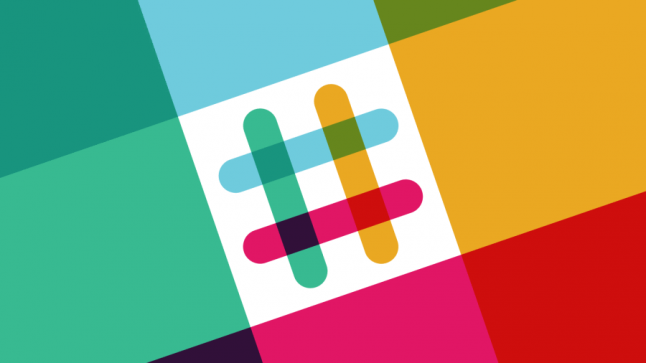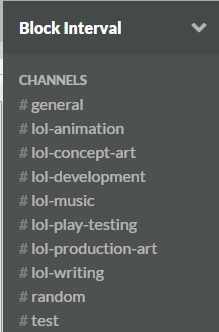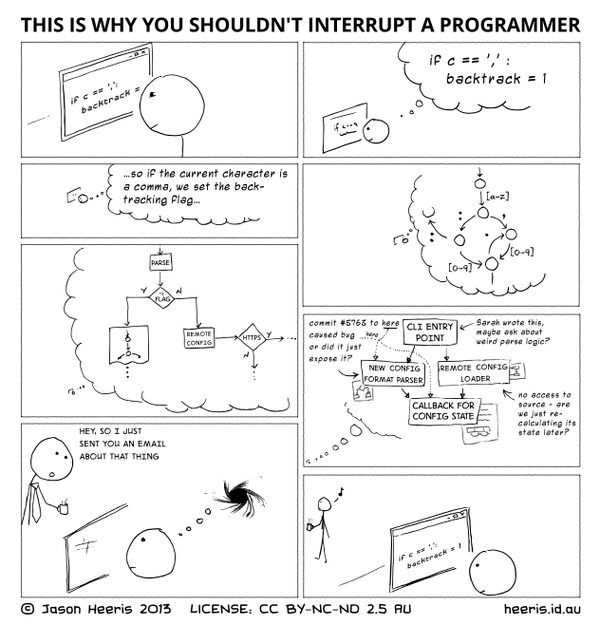It seems like the majority of people working in or with small and middle-sized game studios and teams use the cloud-based chat app these days. Put a call out to game developers asking which of them use Slack and you will get a lot of responses.
This is perhaps to be expected given that Slack was conceived within the context of game development. Stewart Butterfield originally created Slack as a way to organize the multiple online conversations between the people he led while working on the now-defunct MMO Glitch. Unlike other chat services, Slack (an acronym for Searchable Log of All Conversation and Knowledge) splits the conversation across multiple channels, each of which can be given a designated topic. It also allows people to directly message each other privately and bring in others to that conversation if they choose.
Butterfield also intended for Slack to be integrated with a team’s favorite services, like GitHub and Dropbox. Source code and files from either can be imported to Slack so the whole team has easy access to them, can keep track of any changes, and collaborate on their development in the same online space. This integration remains to this day, years after Butterfield released Slack to the public, and has in fact grown to include many more services, such as Google Drive and Trello.
The ubiquity of Slack has us wondering about its impact on game development teams and how they work in recent years. Adventure game pioneer Ron Gilbert, recently tweeted that he considers Slack to be the “most useful tool [he’s] seen in game development over the past 30 years.”

Team-building
Speaking to Gilbert, he reveals the reason he made this statement is due to how Slack has changed how he works within game development teams. Before Slack, he used an instant messaging service, which only allowed for one-to-one conversations. With Slack’s multiple channels and group conversations he’s found a way to not only converse better, but to build a sense of community among his team, despite the distance between them.
"I like the way that even the team members not directly involved with a particular aspect of the game can see the conversation developing."
“What Slack has allowed is building a tight team in a way that in the past would have required an office and everyone to be local,” Gilbert says. “Slack is more about building your team’s community than just communications. I can now go out and hire the best person and not have to worry about them being in Seattle, or moving them here.”
Even once a person’s work is done on a project, Gilbert lets them remain in the Slack group, where they can continue to be involved in the game if they wish, and also keep up with the team as friends. “I also really appreciate Slack’s billing,” adds Gilbert, “they automatically drop people from your bill if they don’t log in, and add them back when they do.”
It’s the accessibility of Slack that allows Gilbert to so easily add and remove people from his group. This is something that prolific game maker and member of six Slack groups, Alex Bethke, speaks about as well.
“Most developers who use it do so for its accessibility - it’s just so easy to bring new team members on board,” says Bethke. “The barrier to entry is super low, which is very important for the adoption of any tool, especially across multidisciplinary fields like game development. The search features seem pretty clean and equally easy to use, which makes finding details a lot easier than something like email threads or Google Hangouts.”
As Bethke says, central to Slack’s accessibility is its channel-based setup, which many developers use to split up what were unwieldy conversations in other chat apps. That’s what Ricky Haggett of Hollow Ponds found especially useful when using Slack for the first time recently, while creating his roguelike Loot Rascals.
“We ended up keeping the number of channels quite small, so as not to spread the conversation over too many places - especially for a game where so many of the systems interlock and overlap, but it was great to be able to have specialized ones, e.g. for audio + music,” says Haggett.
“I like the way that even the team members not directly involved with a particular aspect of the game can see the conversation developing, and therefore have a good handle on the wider issues around the specific part they're working on. And sometimes those people chime in with a really good idea.”

via solidwhetstone
Helping distributed teams and non-native speakers
The idea that Slack helps to bring a team together as they collaborate is brought up by a lot of the game developers that use it. It seems to be an increasingly important goal for teams that are spread across the world, especially as governments introduce policies that make it harder to physically cross borders.
"Almost every game studio I know uses it. I don't have to worry about managing multiple communication apps on my desktop, I can just confine it all to Slack."
Toronto-based Gabby DaRienzo is one of many people who has been working on a more international level since she started using Slack. She’s currently a member of 21 different Slack groups: one for her own studio Laundry Bear Games, others for the freelance game projects she works on remotely (Graceful Explosion Machine, Parkitect, Celeste), and many more for specific community groups she contributes to.
“Before, we primarily worked with local folks because it was easier,” says DaRienzo, “but Slack's ease of use allows us to collaborate with anyone from anywhere, which opens up a lot of options for us that we wouldn't have considered before.”
It’s the fact that all these different teams and communities are using Slack that makes it possible for DaRienzo to participate in all of them. “It's a very convenient tool because almost every game studio I know uses it,” she says. “I don't have to worry about managing multiple communication apps on my desktop, I can just confine it all to Slack.” DaRienzo says she’s able to jump between the different teams with ease and manage multiple projects at once.
Another way that Slack has helped to unite team members from different countries is seen at Danish studio Bedtime Digital. The team is currently split across several ongoing projects that are made up of people with various nationalities: Danish, French, German, and Ukrainian. Many of them are based in the studio’s office in Denmark, so distance isn’t the problem that Slack solves, it is instead translation.
“As we communicate almost exclusively in English, and it is not the mother tongue of any of us, communicating [in Slack] allows people to look up translation for some words before sending messages,” says producer Emilie Mavel. “It helps make discussion less stressful and more efficient.”
Quieter offices
While Slack has helped to bridge people across countries and encourages them to collaborate across long distances, it is also used, perhaps even more commonly, to improve local office spaces. There are a number of ways in which Slack is used for this purpose.
“Slack serves as the communication tool for everything that needs to be noted down somewhere,” says Simon Wallner, of four-person team Lost in the Garden. “Pasting links to the occasional Google Doc, festival entry form, or dropping stack traces and error messages. It's a bit like a large shared whiteboard that also supports copy/paste.”
As the team at Lost in the Garden is based in an office, they enjoy a lot of face-to-face communication. But Slack’s accessibility and its integration with many important development tools and programs have made it the perfect medium for anything that needs to be written down or that needs multiple eyes and hands on.
Tanya Short of Kitfox Games agrees with this sentiment. She says that, even in her team of six people, they might be discussing three projects at once, with some members involved in all of them. For her, Slack’s multiple channels, “where infodumps or files or questions can happen without breaking anyone's flow is valuable.”
"It has definitely allowed for fewer interruptions, fewer meetings, and a quieter workplace."
However, one complaint Short has with Slack is that it’s “tempting to use it for file sharing or archiving, which is way too messy and weird compared to ACTUAL file sharing solutions otherwise implemented (Dropbox, Google Drive, SVN, etc).”
Something else that she touches upon, and which is brought up by many game developers who use Slack, is that it helps to keep noise down in offices. “It has definitely allowed for fewer interruptions, fewer official meetings, and a quieter workplace, even though we have an open floor plan,” she says.
What coders like (and don't like) about Slack
Paul Lawitzki, a coder at seven-person team Chasing Carrots, builds upon what Short says on Slack’s ability to keep noise down and allow for fewer interruptions. The biggest advantage of communication through Slack from Lawitzki’s coder perspective is that you don’t have to respond to requests immediately. Its multiple channels help to break up the conversation so he can skim them and prioritize based on what he sees. But he adds that, when he’s “in the zone,” he can ignore the requests completely and come back to them later, whereas verbal communication used to completely interrupt his flow.
“This is actually a big issue in programming,” Lawitzki says. “If you're in the middle of something, even the shortest interruption might basically reset your entire chain of thoughts.” He brings up a cartoon made famous around coders as it speaks to this common issue.

Jason Heeris's comic illustrates the interruptions that Slack can help to minimize
He also points to a thread on StackExchange that saw coders discussing how to explain to people why they shouldn’t be interrupted while they’re deep into their work.
No tags.



































